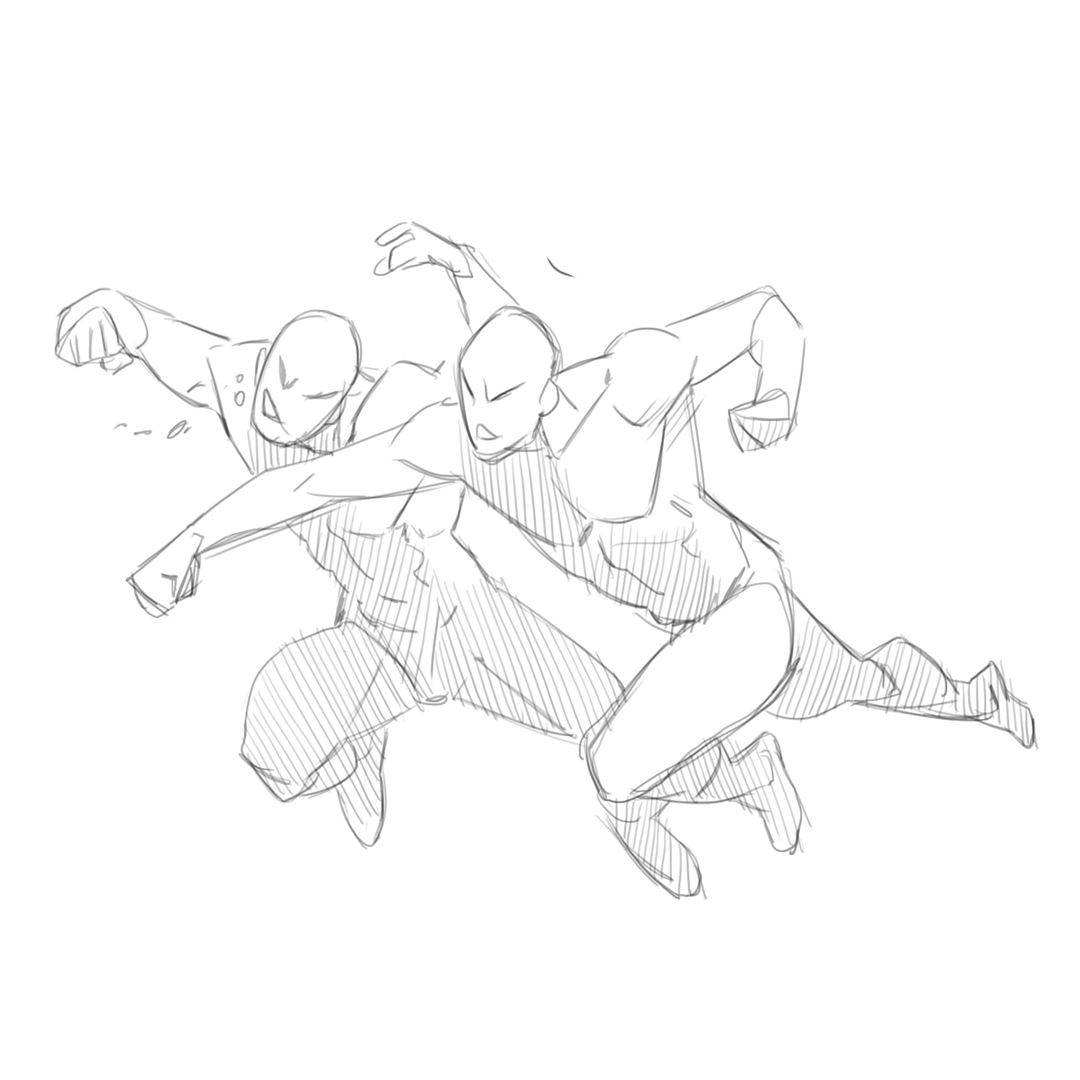
The general model might say, well, this arm might swing right about here, which would be the bottom of the rib cage. Remember, we talked about a general model. Suddenly, you’re aware that-this would be too long. It’s coming from your experience, this sense of where a thing is placed. The proportion comes from having, to some degree, studied measurements of the body, and you bring that measurement into your speech, your language. In a way there is this kind of from-the-gut proportion. The second thing is to build the shapes and volume. First was kind of an assessment of what the subject is doing. We’ll get into this discussion, but I want you to see the three levels of consideration. So in a sense the action is leading us through the story, and then we begin to find out how the forms which are more articulated by three-dimensional concepts such as cylinders begin to enhance that and finally how the anatomy articulates that? So, notice I’m pulling a line all the way up here from this point down to the attachment below the knee. At first it’s simply a sentence, a gestural sentence of what’s going on. Suddenly they are helping me tell this story. If I come around I can find the bones in front and find the pubic bone and so on. We’re observing that there is a pinch here or a coming together of these two parts, whereas on this side we have a stretch. Right? Suddenly we realize that these actions can be analyzed. Maybe this arm is draped along the side of the body with this arm up. This is what I want us to start to pay attention to. But I am paying attention to what these solid parts are doing.

I’m kind of shooting from the hip on this like we said with gesture. You might notice that I didn’t do a measurement. First, they are the divisions that are important.

As we break them down it becomes clearly more and more anatomical. We’ve got this to this to this, and we will be breaking these parts down. There is a relationship to them that always takes place that’s rather unique. We’re basically trying to locate those ideas. We can then say that the subject may be doing something like that, or this leg may be doing something as well. That’s obviously going to involve this infrastructure right here. Notice right away there is a new relationship between these two. Let’s just say that, for instance, we have a subject that’s leaning like so, and maybe this way. Right now it’s just eight parts of the body, and what we want to do is just simply see and observe when you’re working with a model or a subject, or even from your mind’s eye, how those eight parts interact with one another to describe and action. Obviously, we’re going to develop those parts as we go along. Alright, then, if we add in the arms and legs we’re good. So that’s one, two, let’s call this three, and four. The neck, right here, is part of the spine, but this is where the spine basically has its own location, its own territory.

You may remember that I’ve spoken about this before. By the way, when I talk about eight parts, this is the first part here of the skeleton, and the first part is the upper torso, then there is the lower torso. We will starting with eight parts of the body, very much like we would start a gesture, but we’ll be looking at it and thinking about it slightly differently. That’s relatively simple than just thinking of the body parts, how they connect, and so on. Remember, we said we’re going to approach this anatomy from a rather unique point of view, from the point of view of sentencing.


 0 kommentar(er)
0 kommentar(er)
